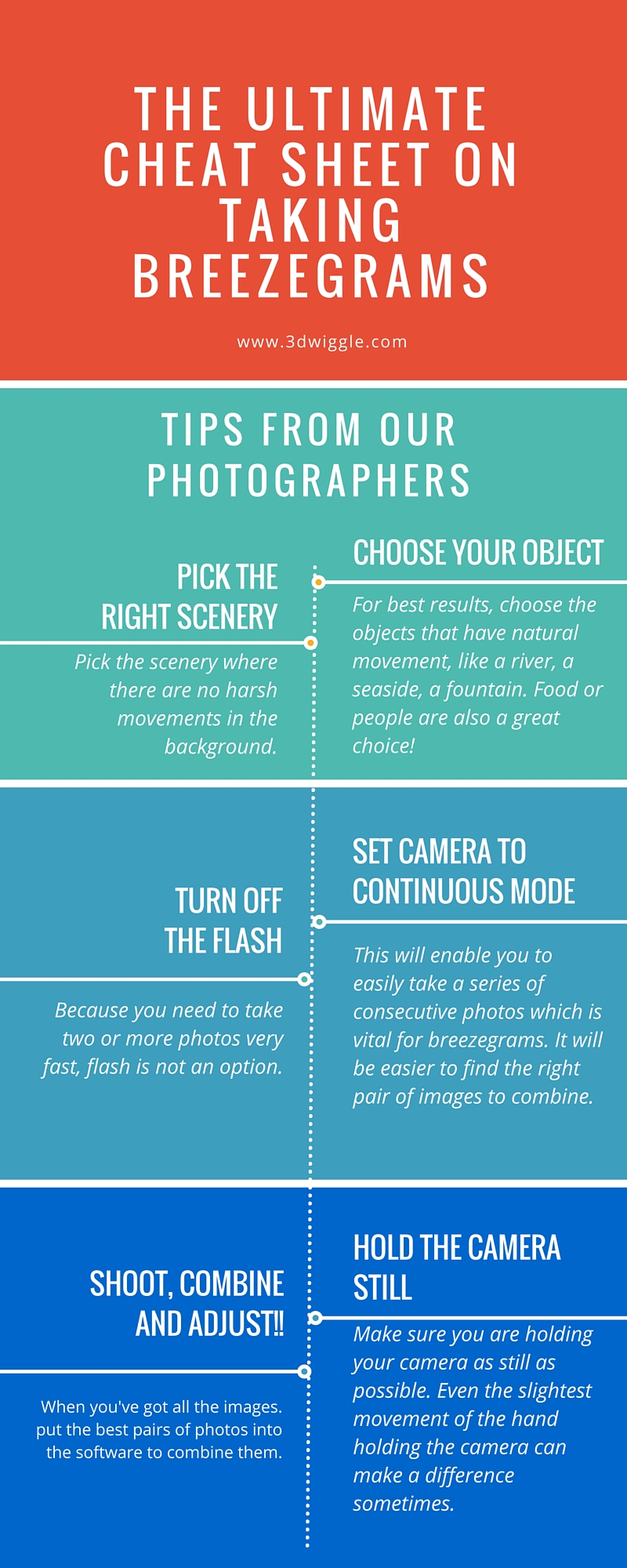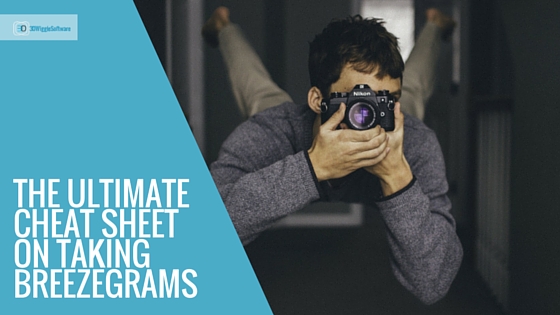The Ultimate Cheat Sheet On Taking Breezegrams
Have you ever tried creating a breezegram? Have you had some trouble in creating breezegrams?
We spoke with our professional photographers about the steps we should take when shooting photographs for a breezegram. We share with you their tips here. Just below the quick definition of breezegrams you’ll find an infographic followed with the advice from the professionals in the field.
Breezegrams are images with a slight movement. Breezegram stands for still images in which subtle and minor changes occur. They can bring a new powerful look to your image and make it more refined and alluring. Take a series of images of the same scene where some of the objects are in slight movement while holding your camera as still as possible. Adjust them in 3DWiggle and get some amazing breezegrams.

1. Choose your object
The most important thing for creating a good breezgram is choosing the right object or the scenery. The most effective objects are those that move naturally, like the water for example. The river, the sea, or a fountain create the breezing effect on their own. Another example might be the grass or on trees leaves moving with the wind. Food or people can also make stunning breezegrams. If you opt for one of these two themes, you will probably need to scene these images more.
2. Pick the right scenery
What you need to be careful in particularly is the background. You need to pick the scenery where there are no harsh movements in the background, or in the nearness of your object. The noise in the background takes the attention away from the object. Furthermore, it might create a headache to a viewer. So, if, for example, you are taking photos (for your breezegram) of the seaside, your scenery needs to be more-less clear. If you have the beach crowded with people in front of you, there is a big chance that they’ll e making fast movements. This will look uneven and unnatural when the pairs of photos are combined in the software to create a breezgram.
3. Pull out your camera.
Any type of camera works, including your smart phone or tablet camera. For breezgrams, specifically it is preferable that the camera has the continuous shooting mode.
4. Set your camera to continuous mode
Most of the cameras today have the continuous shooting (or “burst!”) mode setting. When this mode is activated, the camera will usually make about five photos in the time range of 2 seconds. This setting will enable you to easily take a series of consecutive photos which is vital for breezegrams. Focus on the object and press the “shoot” button and hold it.
If your camera does not offer this feature, you can make two or more consecutive shots manually, one after another. In this case it would be the best to catch a movement that is slower. Otherwise, the shots will not capture the essence of the movement and the photos will not be compatible. When put in the software in will be harder to combine and adjust the pairs of photos, thus the effect might be disappointing.
5. Turn off the flash
Because you need to take two or more photos very fast, flash is not an option. Each flash, no matter the type of camera, needs a few seconds to get to its previous state, when you are ready to shoot again. This pause between the photos can be “fatal” to a breezegram where you are trying to capture slight movements.
6. Hold the camera still
Make sure you are holding your camera as still as possible. Even the slightest movement of the hand holding the camera can make a difference sometimes. The best advice is to put a hand below the camera and place the camera on it. This kind of support may help overcome possible shaking of the hand or flicks.
7. Shoot!
Press the shooting button and hold it.
When you’ve got all the images on the camera, put the best pairs of photos into the software to combine them. Adjust them with a series of features the 3DWiggle Software offers. Particularly useful with breezegrams is the speed setting. With this feature you can adjust how fast or slow will the object on your image move. For the water flow, you may want to set the movement between the photos on a slower speed in order to create a peaceful breeze. When people are the subject, however, fast movements can be really amusing!
Did you find these guidelines useful? Test your ability to make breezegrams and show us the results.
For any further questions, please right in the comment below. We will make sure to pass them to our photographers and provide you with the answer ASAP.
For some examples of breezegrams, take a peak at our Breezegram Gallery!
We thank our amazing photographers, Marija Velinov and Sanja Rajković, for sharing!

